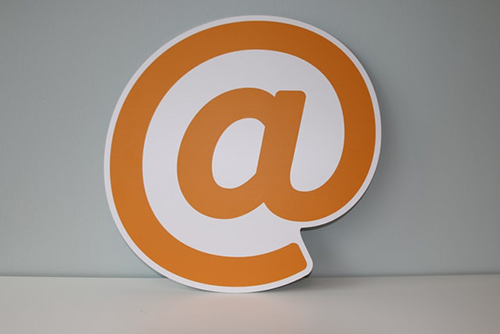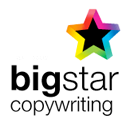15 types of marketing communications you should probably be using
5th August 2019Content Marketing Author: Derryck Strachan → More posts by this authorThere are many types of marketing communications. Each one is an opportunity to engage your target audience with laser-guided precision. But how does a copywriter tailor their content to make the most of each format to connect with the right people at the right time.
Here is a beginner’s field guide to different types of marketing communications and how to approach each one to maximise your chance of success.
- Blogs
If a website is a business’ shop window, the blog is an audacious child that has sneaked into the display to have some fun. The best business blogs are unrefined, unpredictable and unmissable with an emphasis on useful insight, engaging opinion and practical advice.They give readers a reason to return to your site and provide you with the means to build up an enduring relationship with your customers.

Perhaps more than any of the other types of marketing communications mentioned here, blogs are – when used correctly – the hardest working. They can contribute to the success of your SEO, social media, customer retention, sales, customer service and practically every other element of your online marketing. Backlinko and BuzzSumo recently analysed 912 million blog posts and compiled their findings here. We’ve distilled everything down to the following points:
- Long-form content generates more backlinks than short posts
- If you want more social media shares you should be writing around 1,000 to 2,000 words per post.
- A small number of ‘Power Posts’ disproportionately generate more shares – 75% of social shares come from 1.3% of articles
- If you write headlines of between 14 – 17 words these will get more social shares
- Titles that pose a question get almost 25% more shares than those that don’t
- List posts and ‘why’ posts are best for social sharing – way better than infographics and ‘how-tos’.
- ‘Why’ posts, ‘what’ posts and infographics are linked to more than any other content
It’s essential to regularly post to make the visit worthwhile for readers. This will also help you climb higher on Google’s search rankings so the people you want to reach find all the good stuff you’ve written.
Find out about our professional blog copywriting service.
- Long-form content
We’ve just talked about how long-form content generates more shares and links than short posts. Let’s give the elephant in the room a little TLC. Some people have short attention spans. Some people think that 280 characters is a long read. But for most, there’s still an appetite for long reads.

If content is relevant and useful to them as a customer or their personal life they will read it. There is no golden rule on what a long read is – but around 1,400 – 2,000 words – and you’re in the right ballpark.
You’ll need to think about making your post SEO friendly. One of the most effective ways to do this is to write a high-quality ’Power Post’. This page could be an ‘Ultimate Guide’ say. Check out this helpful post by Zoogly to see how to do this.
- Case studies
Case studies are one of your most potent content marketing tools to demonstrate how your products and services can make a difference. When writing your case study, let the customer tell the story rather than you telling it for them.
Build a narrative around the challenge the customer faced, how your product or service helped them overcome this challenge and the results (use real-world quantifiable outcomes). Create a compelling story, with plenty of customer quotes to tell the story from their experience to help prospects see how things could work for them.
You’ll need to put these on your homepage as a dedicated page. Some brands don’t call these pages ‘case studies’ anymore and they use ‘our work’ or ‘success stories’ or ‘customer success’ even.
Convince and convert potential customers with powerful case studies
- eBooks
Most of the formats that we are exploring are free to the reader and readily available without the need to sign up for anything. Often this is called ‘open’ content. You publish it in its entirety on your blog post or social media channels or you post links.

You could also consider how to use ‘gated’ content, whereby people provide contact information on a landing page or post to download. eBooks are a classic example of how brands use ‘gated’ content to generate more leads by creating interest and widening contacts lists. They are typically 2,000 words+. They are still free. The pay- off for the creator is asking readers to sign up to access this type of content.
- Checklists
Checklists are a really simple but effective format to add to your content marketing plan. In fact, you’ll probably use a checklist when you’re putting your plan together. You can post a checklist on your blog, or create an infographic. Whichever way you present the information, breaking down processes into logical steps to make it easier for people to remember and complete each stage of a task is highly valuable.
- Product Descriptions
You may have the right product and the right consumer, but unless there is the right chemistry between the two, they will pass each other by like ships in the night. The product description is the bond that brings them together, and you need to be well acquainted with both parties before you can begin to engineer a successful union.

Find out about our dedicated product description service.
- Facebook
With nearly 2.3 billion monthly active users, Facebook is one of the most important platforms – perhaps even the most important platform – to be engaged with as a business. That’s any business – B2B or B2C.
Sure, it is a public playground in which to make friends and share amusing gifs. But if you provide creative, stimulating content people will engage with your brand, explore and have fun – and they’ll invite their friends along too.
With over 7 million advertisers now using Facebook regularly it’s not just a place to share cat videos. There are now a number of ways to engage with the planet’s biggest social media platform including business pages, paid advertising, promoted posts, live and recorded video and remarketing.
Facebook’s personal nature means that corporate-style formality is out of place. Instead, most businesses favour a more informal tone of voice and quality content that strikes a chord with users’ personal interests, hobbies or aspirations.
- Twitter
With 326 million active users every month, Twitter is pretty much impossible to ignore and most businesses now have some presence on the micro-blogging behemoth. If you have a Twitter profile, you’ll need to tweet regularly to sustain a positive relationship with your followers.

Keeping followers interested involves sending out a steady supply of fresh, engaging tweets that they will want to retweet across the Twittersphere and beyond. The key to success with Twitter marketing is to attract influential followers whose retweets will hit your target audience in large volumes and with added authority.
Twitter has also paid options in the form of promoted tweets.
- LinkedIn
LinkedIn may be a social media platform, but it is strictly for business. Attracting new clients involves propelling attractive, relevant content outwards and demonstrating your thought leadership, expertise and how you can help their business.
As with many elements of content marketing, the best approach is to avoid direct sales messages and concentrate instead on providing useful content (see the section on blogs above) for a highly targeted customer. You can also share this content in relevant LinkedIn groups.
LinkedIn also has its own paid options, including premium subscriptions, sponsored content, sponsored InMail and text ads.
- Email
Email is still the number 1 online communication tool. Figures from Statista show that active email accounts are expected to hit 5.6 billion this year. 99% of consumers check their email everyday according to the Data and Marketing Association.
And yet email marketing can be difficult to get right, largely due to the relentless stream of spam emails we all see day in, day out.

So how do you get email marketing right?
Firstly, post-GDPR, people on your mailing list must have positively opted in.
Once you’ve your list, you’ll need to offer something of value to your email prospect. This is called your ‘lead magnet’. It could be an offer, a giveaway or valuable content. Make it super-specific and super-targeted. You need to make a fair exchange as an email address is an incredible asset and most people understand that.
When people are on your list then they are at your mercy – so make sure you continue to honour that principle of fair exchange. Sure, you want to sell your goods or services but do so in a way that shows you clearly understand the recipient’s needs. We've written an article on how frequently you should email your list for the best impact.
Even when someone is not actively buying, you need to offer value that respects the relationship you’ve built with them. Your emails should continually offer something worthwhile in an honest and spam-free way.
Learn what a professional email copywriting service could do for your click-through-rate.
- Press releases
Are press releases still relevant in a digital age? Absolutely. They are still an effective format to help brands reach target audiences – offline and online. Using a well-crafted press release to inspire media and industry influencers to share brand stories and get people talking about your good news is still a content marketing staple.
Online PR is also a powerful strategy for securing external links to your site from authority domains and in turn improving your search results.
The principle is simple: take a newsworthy story (without a good meaty story, a press release has all the appeal of a sausage roll without the sausage) and present it using the time-honoured press release format.
Straying from the confines of this time-honoured structure is a way to guarantee failure. So just this once, keep your bohemian urges in check and play by the rules.
Once you’ve written your press release what do you do with it? There are a number of online news distribution platforms including PRWeb and eReleases. However, if you’re serious about PR then start building your own list of publications (online and offline) relevant to your sector.
Good PR is all about building long-term mutually beneficial relationships with other human beings that happen to work in the media – don’t sell that principle short by overselling a story, being too pushy or exploiting trust. Don’t be too focused on the immediate story – think of your long-term objectives and the bigger picture for your brand.
- Direct mail
Direct mail – the actual envelope and paper kind – is still alive and well. There are two types of sales letter: appealing ones, that make a genuine personal connection to the reader; and appalling ones, that make an unprovoked assault on the reader. To craft correspondence that catches the eye and compels readers to react – it has to address the needs of the customer, not the prowess of the business.

When writing a sales letter, always put yourself in the mind of the customer who will think “what’s in it for me?” Effective sales letters look to elicit an emotional response in the reader. Spend time understanding what motivates your customer and make a direct appeal to that.
Figures from the Data and Marketing Association show that on average digital channels get a 2% response rate. Whereas direct mail response rates higher at:
- 5.1% for house lists (permissions-based lists that brands compile such as current or past customers)
- 2.9% for prospect lists (compiled by third parties)
Response rates can increase to 35% when you effectively combine direct mail with your email marketing efforts according to IWCO Direct.
- Websites
Many companies’ websites shout out corporate hype, branding buzzwords, product features and benefits at the top of their voice like they are trying to attract the attention of oblivious passers-by.
The truth is, visitors want solutions, not sales. Arguably, by the time they visit your website, they are already fairly sure it has got what they want: they’ve seen your blog, engaged with you on social media, seen your reviews or received a recommendation from their friends and family or another online user. The job of the site is to make the necessary information instantly and effortlessly available.
The topic of websites is too big to discuss in a segment of a single post but here are two nuggets to consider when thinking about your website:
- First, the mobile tipping point has long been surpassed. In the UK for example, Ofcom reports that 72% of people use their mobile to access the web. The current thinking in UX is: design your site for mobile first.
- Second, you have probably wondered “do I even need a website anymore?” You do. Even in the world of apps and social media, a website is your ship’s anchor. Most of the time people will eventually end up on your site. It’s where they will want to find out more about your brand. It’s where your content lives too. If you don’t have a website your content could end up bobbing about with all the flotsam and jetsam on the web.
- Brochures
Does anyone print brochures anymore? Of course. In fact, with the relentless information overload presented by working and socialising online, it can feel more ‘real’ to receive a printed brochure.
For a corporate brochure to actually make an impact, rather than gather dust on the reception coffee table or be filed directly in the bin, it must be written for the reader, not the business.

Prospective customers do not want to read about how great a company is. They want to know what the company can do for them.
Brochures are a great showcase for your brand and a way to express your ‘intrinsics’.
Think carefully about your brand story and how you convey that in the most effective way.
- Promoted features
A promoted feature is a piece of editorial that is paid for. Generally, it discreetly incorporates relevant sales information within engaging editorial, with the theory being that it will be read by far more people and generate far more reaction than a standard advertisement.
The best features blend promotional content with editorial in a relevant, newsworthy story that is totally aligned with the publication’s house style so the reader barely acknowledges the difference.
What next?
This article provides just a brief introduction to different types of marketing communications that you could be using in your business. Should you be using them? How do you use them successfully? Those are bigger questions that you need to address within your marketing strategy.
Thinking about these five questions can help you figure this out:
Who do you want to reach?
Why do you want to reach them?
What do you want to achieve?
How does content can help you do this?
Who is going to write this?
A one-page plan should be enough .Once you’ve got this in place, a content calendar will be a big help to plan how you will use each format.
Editors Note: This post was originally published in November 2015 but has since been completely updated so it stays relevant, accurate and valuable to our readers.
Want to talk about making content marketing work for your business? Give us a call on 01803 865025 or drop us a line.


.gif)







.png)

0 Comments
if you have any issue let me know plz